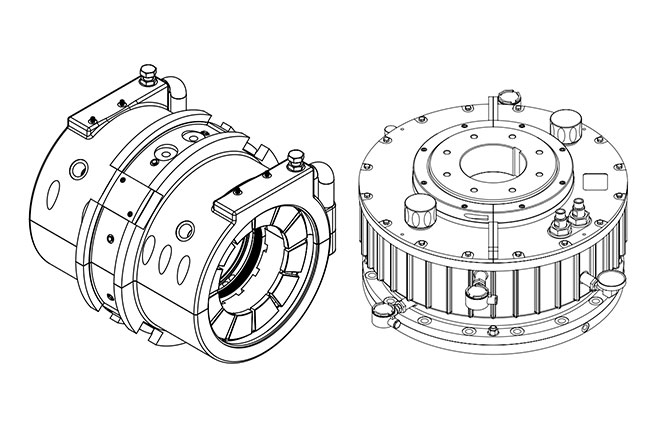What is the reason why the temperature of compressor bearings increases during normal operation?
Compressor bearings will have a certain temperature increase during normal operation, which is mainly caused by factors such as friction and lubrication. Friction results in energy loss and heat generation, and lubrication is key to reducing friction. Normally, a suitable bearing operating temperature should not exceed the upper limit of its design operating temperature.
When the temperature of the compressor bearings rises significantly beyond the normal range, it may indicate that the bearings are overheated. Overheated bearings can cause many problems, including reduced bearing life, reduced bearing performance, and fractures. Therefore, timely detection and resolution of bearing overheating problems is crucial to ensure the normal operation of machinery and equipment.
The causes of bearing overheating are as follows:
1. Poor lubrication: The normal operation of the compressor bearings requires good lubrication. Insufficient lubrication or poor lubricant quality will cause increased friction on the bearing surface, which can lead to bearing overheating.
2. Overload operation: If the equipment exceeds the load range of the bearing design, the bearing will bear excessive pressure and friction, resulting in overheating.
3. Bearing damage: If the bearing is damaged to a certain extent, such as surface wear or cracks, it will increase friction and cause bearing overheating.
4. Damaged sealing device: If the sealing device of the
compressor bearing is damaged, it will cause external pollutants and dust to enter the inside of the bearing, increase friction and wear, and then cause the bearing to overheat.
It is normal for the temperature of the bearing to increase, but if the temperature significantly exceeds the normal range, the bearing may be overheated. When a bearing overheating problem is discovered, we need to take timely measures to solve it to ensure the normal operation of the equipment and the life of the bearing.
What should we pay attention to when it comes to vibration problems of compressor bearings?
The vibration of
compressor bearings mainly comes from factors such as the eccentricity of the bearing, unbalanced mass, and excessive fitting clearance between the bearing and the base. These factors can cause unbalanced forces and vibrations in the bearing during operation.
The eccentricity of the bearing refers to the relative displacement between the internal parts of the bearing, which causes friction and uneven forces when the bearing is running, causing vibration. In addition, the eccentricity of the bearing may also cause the bearing to resonate at high speeds.
Unbalanced mass refers to the uneven distribution of mass inside or outside the bearing. When the unbalanced mass of the bearing exceeds a certain limit, it will cause the bearing to generate uneven force during operation, causing vibration. The unbalanced quality of bearings mainly comes from machining errors or poor assembly of internal parts of the bearing.
The excessive fit gap between the bearing and the base is also an important factor causing bearing vibration. When the fitting clearance is too large, the bearing will become loose during operation, resulting in vibration. In addition, excessive fitting clearance will also cause relative displacement between the bearing and the base, further increasing the amplitude of vibration.
To understand the level of bearing vibration, measurements can be made using vibration sensors. Vibration sensors are usually installed on bearings and monitor their vibration levels by sensing vibration signals from the bearings. Vibration sensors can measure the amplitude and frequency of vibration to determine whether the vibration of the bearing reaches a predetermined standard. If the vibration exceeds the allowable range, corresponding adjustments and maintenance are required.
For vibration problems of compressor bearings, attention needs to be paid to the eccentricity of the bearing, unbalanced mass, and the matching gap between the bearing and the base. By using vibration sensors for measurement, the vibration level of the bearing can be understood in time, so that corresponding measures can be taken to ensure the normal operation of the bearing.
